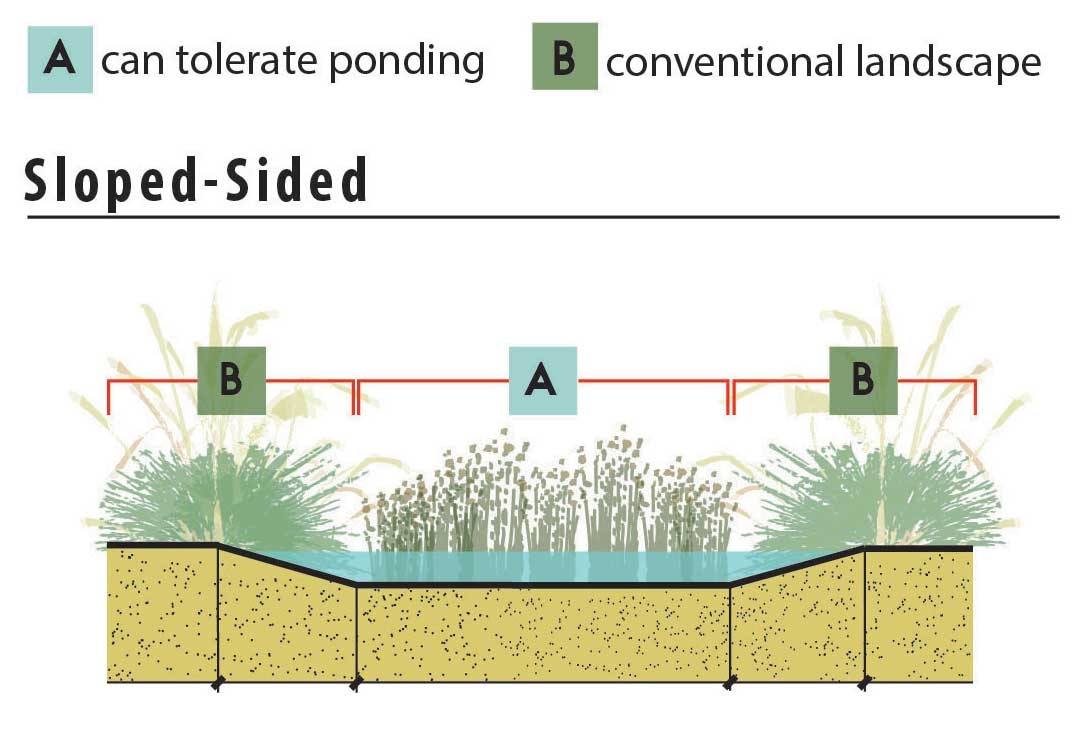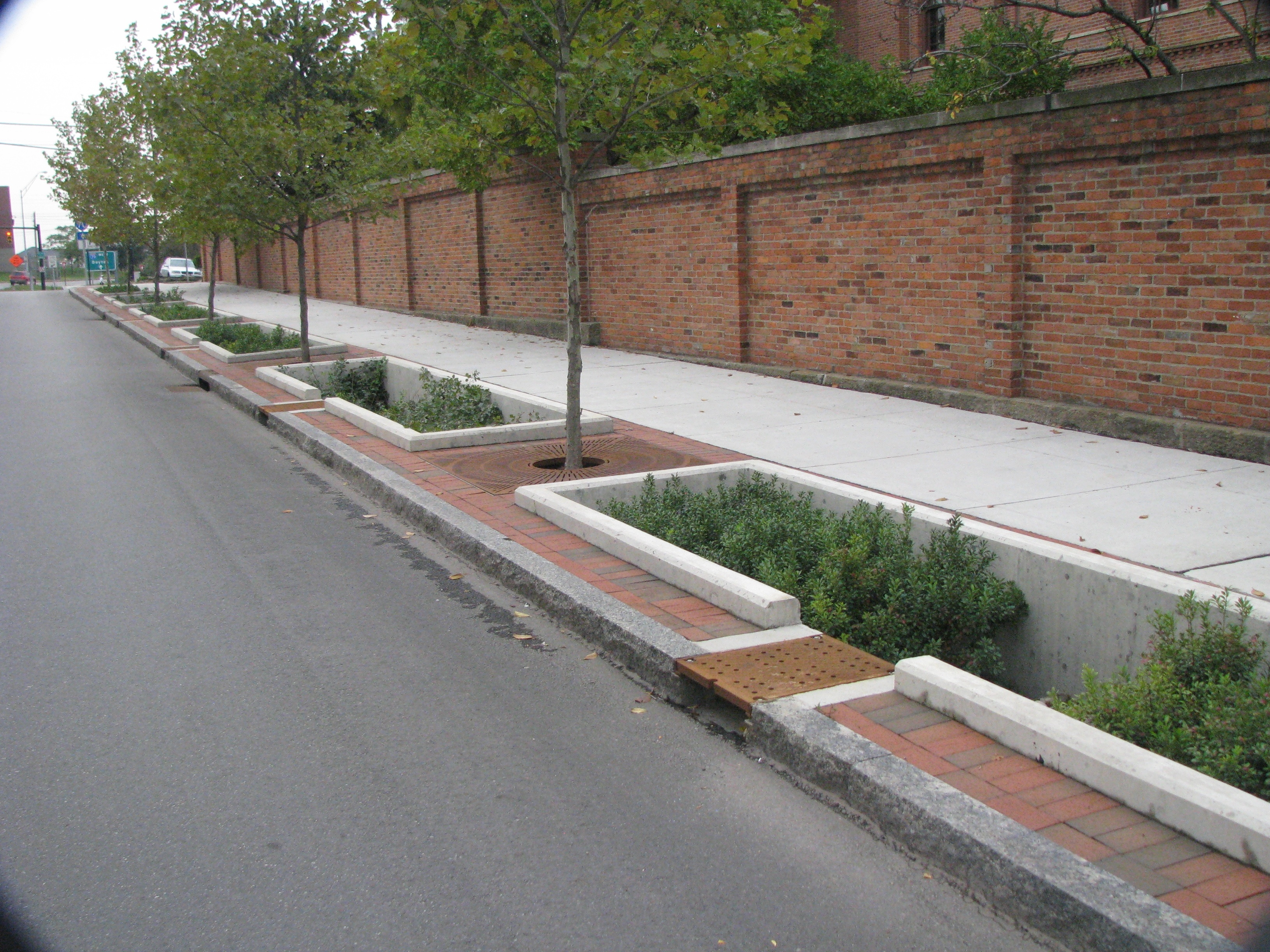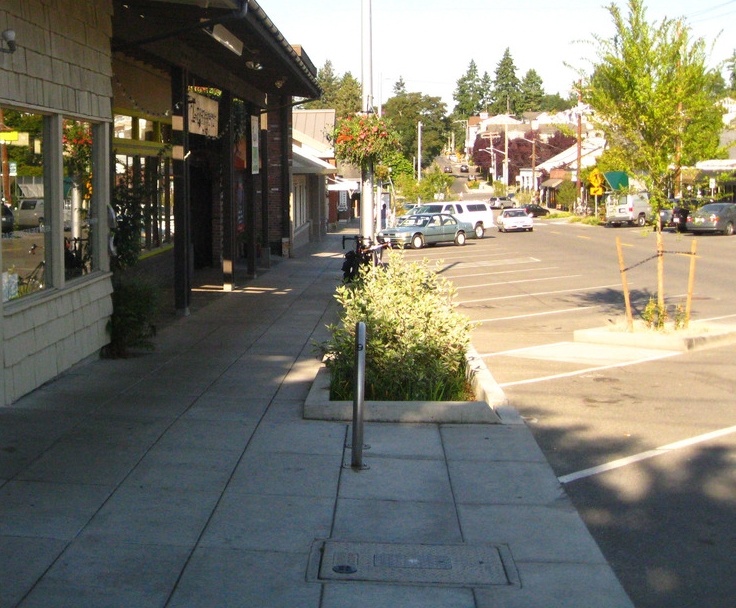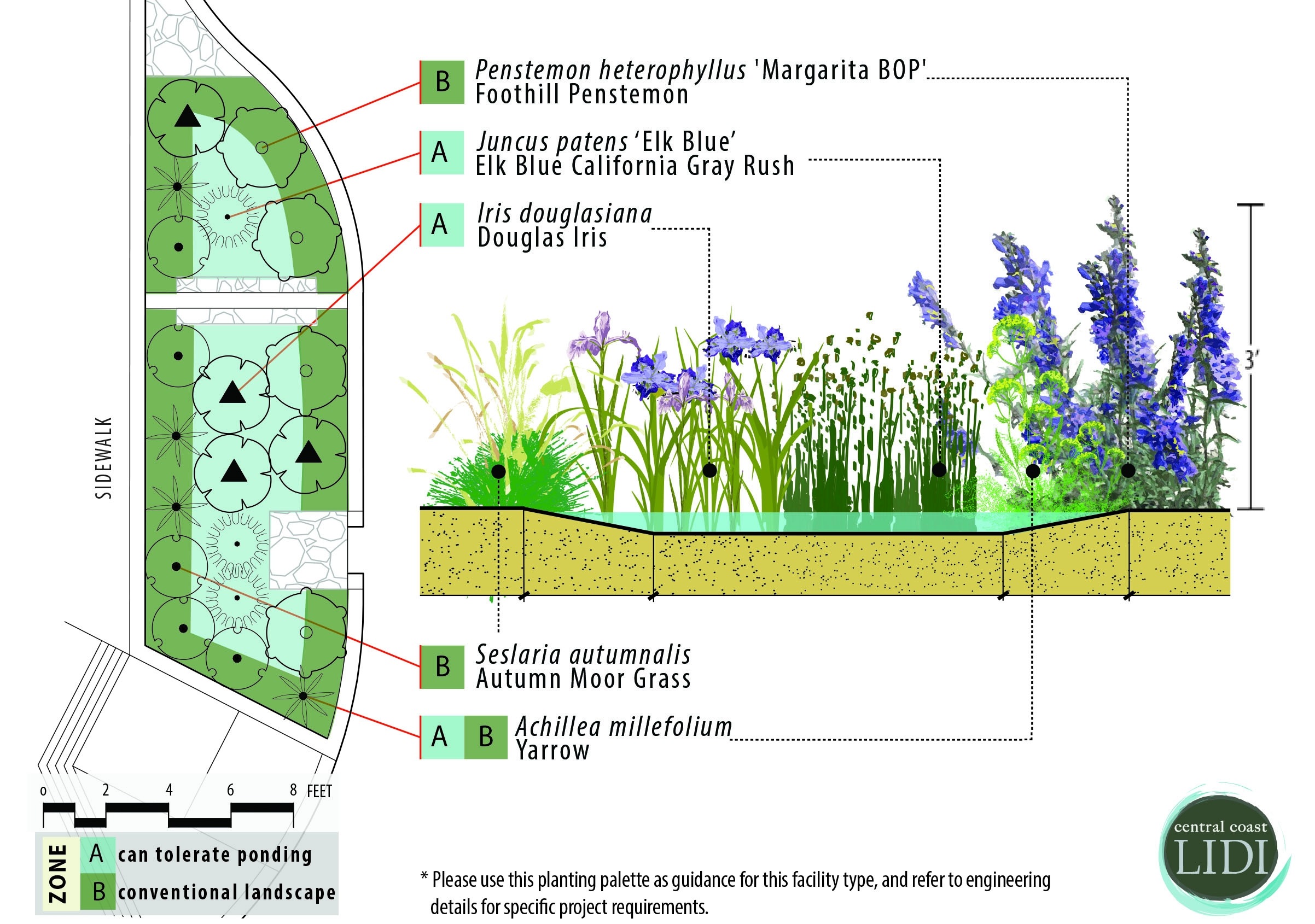Landscape
The selection of appropriate plants for bioretention and other vegetated stormwater facilities is crucial to a successful design. California plant palettes need to be drought-tolerant, appropriate for the regional climate, aesthetically-pleasing, and support stormwater function. LIDI has created several bioretention plant design resource documents for California. While primarily focused on the Central Coast region, the plant design approaches and many of the actual plant types are appropriate throughout California.
Bioretention Plant List - this list includes plants that are appropriate for the functional portion of the bioretention area (i.e., the area that ponds) and includes information on plant light preferences, climate zones, and drought-tolerance.
LID Plant Guidance for Bioretention - this document provides guidance for plant selection, planting, and establishment and maintenance.
Bioretention Plant Palette Guidebook - this document includes guidance for choosing bioretention plant palettes appropriate to different land uses such as commercial, residential, and rural applications. Plant palettes examples are provided.
Clarifying a Common Misunderstanding Regarding Bioretention Plant Selection
In selecting plants for bioretention or other vegetated stormwater management facilities, it’s important to distinguish between those plants that will be located in the functional zone of the facility (Zone A) versus those areas within the bioretention area that do not see greater than average precipitation and associated soil saturation (Zone B).

The photos below show two examples of bioretention facilities. It's tempting to think that all the plants within the facility are “bioretention plants.” However, in general, only the center areas represent the stormwater functional zone and plants in this zone must be able to tolerate periodic inundation and ponding. Typically, plants around the outer edge do not experience ponding or inundation and plants selected for this outer zone can come from a much broader, more typical planting palette appropriate for the climate and application.


Trees in Bioretention Areas
Trees are an important feature in a community and provide multiple benefits, including stormwater management. The LIDI bioretention plant list does not include trees. Why?Because there remains uncertainty as to which tree species are appropriate for placement in bioretention areas. For example, some trees will survive being planted where stormwater ponding occurs, others tolerate a side-slope location, but some trees may not survive/thrive in either. Additionally, careful consideration must be made to meet local municipal requirements for tree and parking lot trees, and selection must avoid species that generate excessive leaf litter that could cover the surface of the bioretention area and reduce infiltration or clog overflows.Comprehensive designs that integrate trees and stormwater function can be done - see some examples below of ways to integrate both trees and stormwater management function.
Example of tree placement that alternates between the bioretention areas.

Examples of designs that further separate bioretention from tree planters.

